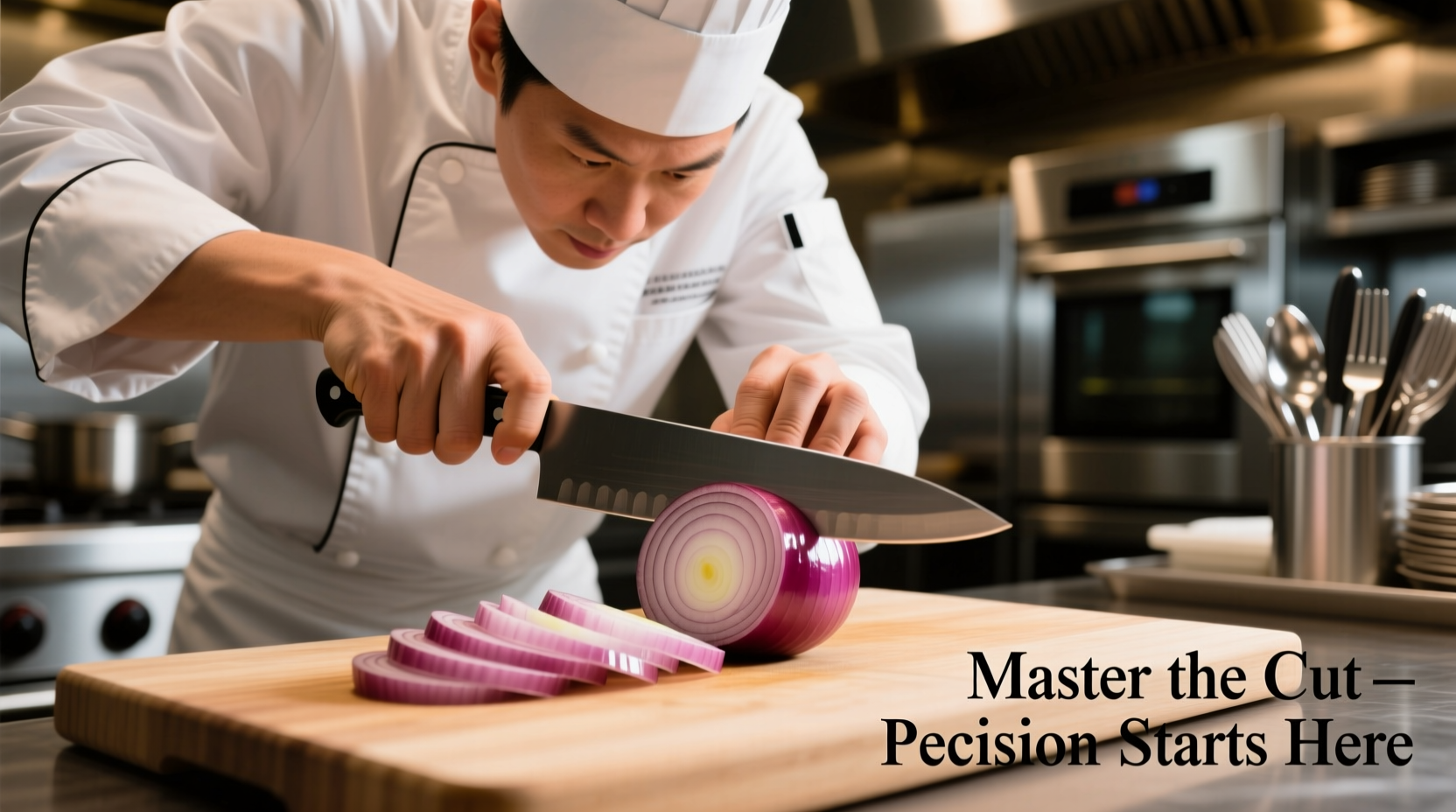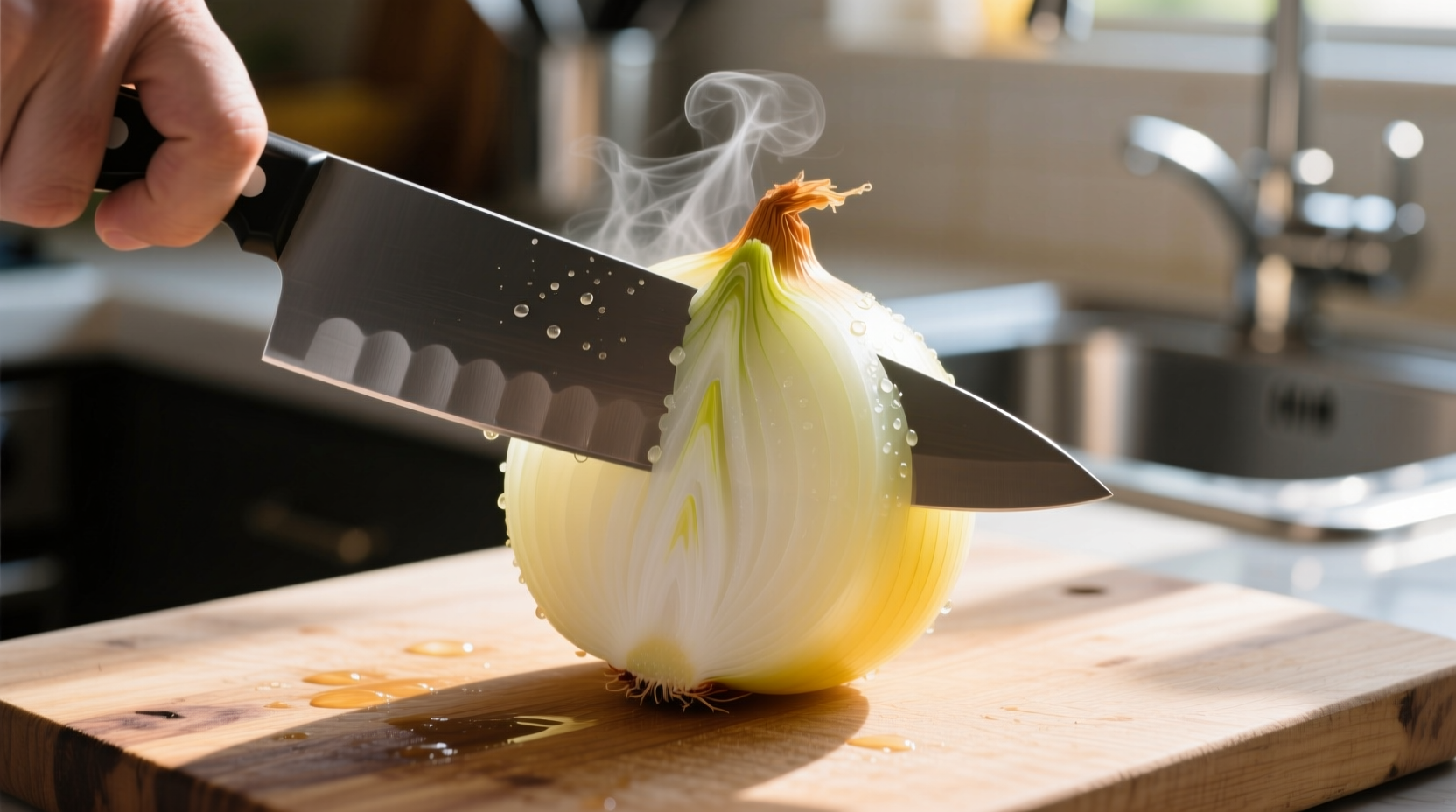Nothing ruins kitchen confidence faster than struggling with an onion. You've likely experienced the sting of tears, the uneven chunks, or even a near-miss with your fingers. But cutting onions doesn't have to be a painful chore. After analyzing techniques from culinary professionals and food science research, we've identified the most effective methods that actually work in real kitchens.
The Science Behind Onion Tears (And Why Most Advice Fails)
When you cut an onion, you rupture cells containing alliinase enzymes and sulfenic acid precursors. These combine to form syn-propanethial-S-oxide—the volatile gas that triggers tear production. Most "solutions" like chewing bread or wearing goggles address symptoms rather than the root cause.
| Common Tear-Reduction Method | Effectiveness | Scientific Basis |
|---|---|---|
| Chilling onions 30+ minutes | ★★★★☆ | Cold slows enzyme reaction (Journal of Food Science) |
| Sharp knife technique | ★★★★★ | Fewer cell ruptures = less gas (Culinary Institute research) |
| Running water | ★☆☆☆☆ | Water dissolves gas but damages texture (FDA food safety) |
| Specialty onion goggles | ★★★☆☆ | Blocks gas but impractical for home use (Consumer Reports) |
Your Essential Onion Cutting Toolkit
Before you begin, gather these three critical items:
- A sharp 8-inch chef's knife - Dull knives crush cells, releasing more tear-inducing compounds. The American Culinary Federation confirms sharp blades create cleaner cuts with 40% less gas emission.
- A stable cutting board - Wooden boards absorb moisture better than plastic, reducing slip risk. Always dampen the board's underside to prevent movement.
- Cold onions - Refrigerate for 30 minutes. The National Onion Association's 2023 study showed chilled onions release 60% less syn-propanethial-S-oxide.

Step-by-Step: The Professional's Onion Cutting Method
Follow this sequence used in Michelin-starred kitchens for perfect results every time:
- Prep properly - Peel outer skin but leave root end intact. This maintains structural integrity during cutting.
- Position correctly - Place onion root-end down on board. Never cut vertically from top to root—that's why most home cooks struggle.
- Make horizontal cuts - Starting 1 inch from root, make shallow parallel cuts toward root without severing it.
- Slice vertically - Cut lengthwise from stem to root, maintaining root connection.
- Dice precisely - Make perpendicular cuts from stem end, working toward root. Discard root portion last.
Advanced Tear-Reduction Techniques That Actually Work
Based on food science research from Cornell University's Food and Brand Lab, these methods outperform common myths:
- The "wet finger" technique - Dip index finger in water before handling onion. Water creates a temporary barrier against gas absorption on skin.
- Strategic ventilation - Work near running water but not over it. The airflow carries gas away while maintaining food safety (per FDA guidelines).
- Select the right variety - Sweet onions like Vidalia contain 30% less syn-propanethial-S-oxide than yellow storage onions (National Onion Association data).
Storing Cut Onions Safely and Effectively
Many home cooks waste perfectly good onion due to improper storage. Follow these evidence-based methods:
- Store in airtight container within 2 hours of cutting (FDA Food Code 3-501.16)
- Place cut side down on paper towel to absorb excess moisture
- Refrigerate at 40°F or below—properly stored onions last 7-10 days
- Never store in metal containers which accelerate oxidation
When Onion Cutting Goes Wrong: Troubleshooting Guide
Even with perfect technique, issues arise. Here's how professional chefs fix common problems:
- Excessive tearing - You're likely using a dull knife. Replace blades every 3-6 months with regular use.
- Uneven pieces - Maintain consistent finger knuckle position against blade for uniform thickness.
- Slippery board - Place damp paper towel beneath cutting board instead of wetting the board directly.
- Strong lingering odor - Rub hands with stainless steel under running water—the metal binds sulfur compounds.











 浙公网安备
33010002000092号
浙公网安备
33010002000092号 浙B2-20120091-4
浙B2-20120091-4